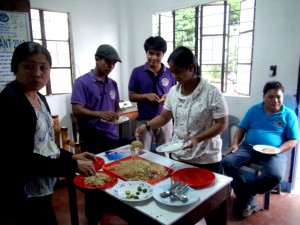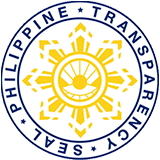
What makes community organizing especially attractive is the faith it places in the ability of the poor to make decisions for themselves. – Paul Wellstone
In a place where it seemed to be a “no man’s place” because of its geographical location is where a group of total strangers were designated for the Kapit- Bisig Laban sa Kahirapan Comprehensive and Integrated Delivery of Social Services (Kalahi-CIDSS) Project.
It was in February 2012 when the Project started in Langiden, Abra. Quoted as “The Killing Field of the North,” the fear this connotes to the place did not become hindrance to the group of strangers who still went on and immersed with the community. Hiking and walking for kilometres of dessert like rugged roads were their little accomplishments which eventually became their routine to reach the far flung barangays of the municipality. During the rainy season, the group even crossed the kilometre long river. But these never hurdled their way to reach the communities and spread the good news.
“We are from Kalahi-CIDSS,” said the Area Coordinator, the leader of the group which identified themselves as the Area Coordinating Team (ACT) to the community. They brought something which the community didn’t believe and called as “false hope” due to their experience with politics. The community perceived that the government cannot provide them big projects because their population is very small and the barangays are far from each other. Thus, when ACT explained that the Project is different since the community will manage it and a big project such as flood control or water system can be a reality, more encouragement was needed since t community thought that this can be another “ningas kugon.”
Aside from being a far flung area and the cynical attitude towards the Project, the ACT was able to find out the reason why the Project seems to encounter challenges on its implementation. They found out that, people in the community were mostly busy in doing their personal chores and have no time to attend Barangay Assemblies or the meetings with regards to the Project.
With this situation, their Social Preparation became a great challenge. They tried so hard to be able to win the hearts of the community people. Efforts were exerted to accomplish this. The ACT along with the Municipal Coordinating Team (MCT) did their best to explain to the communities and let them realize that Kalahi-CIDSS is not just another project that will cause them dismay but a project that will be implemented through their efforts and not by the politicians.
Then, day by day as guided with the Community Empowerment Activity Cycle (CEAC), the Project’s implementation process, slowly, the communities were able to grasp the uniqueness of Kalahi-CIDSS and little by little, the number of the community volunteers increased as others became curious of this good news. Participation of the community people became more noticeable.
In the Municipal Inter-Barangay Forum (MIBF), each barangay will present and assess their proposals for the approval as prioritized proposals based on communities’ set criteria. Three (3) barangays were then prioritized with fund allotment. During the 4th Barangay Assembly, ACT heard from the winning barangays how excited they were for the Sub-Project Implementation (SPI). They’ve been asking on trainings or activities for the preparation for the SPI. Non -prioritized barangays were disappointed, but they have accepted that they had faults especially on their participation. However, they were hopeful and they promised to do their best for the second cycle.
So overwhelming to know that community people understand what Kalahi-CIDSS is for and what it really wants for every community it serves. The greatest thing to be seen and experienced at this moment is to see how people appreciate and accept the Project and how the ACT and MCT see little by little, day after day, the inculcation of empowerment to the people of Langiden, Abra.
There is still a long way to go on through and the team is very expectant that the communities will make it, bearing with them the knowledge and process imparted by the Kalahi-CIDSS staff. They see another side of the reality that there are still people and groups who are still there for them, willing to listen and support their needs and dreams and finally, to attain them hand in hand for community development, which is the main objective of Kalahi-CIDSS.
Knowing the challenges that the team may encounter next, by heart and mind, the ACT who once were strangers of Langiden became stronger and confident that the good news that they were able to bring to the communities will continue. And later on, these strangers will not be the only advocates of the good news, but the communities themselves will be the primary advocates of the Kalahi-CIDSS Project and their own development.# DSWD-CAR, Area Coordinator Isidro P. Bulayo of Langiden, Abra




